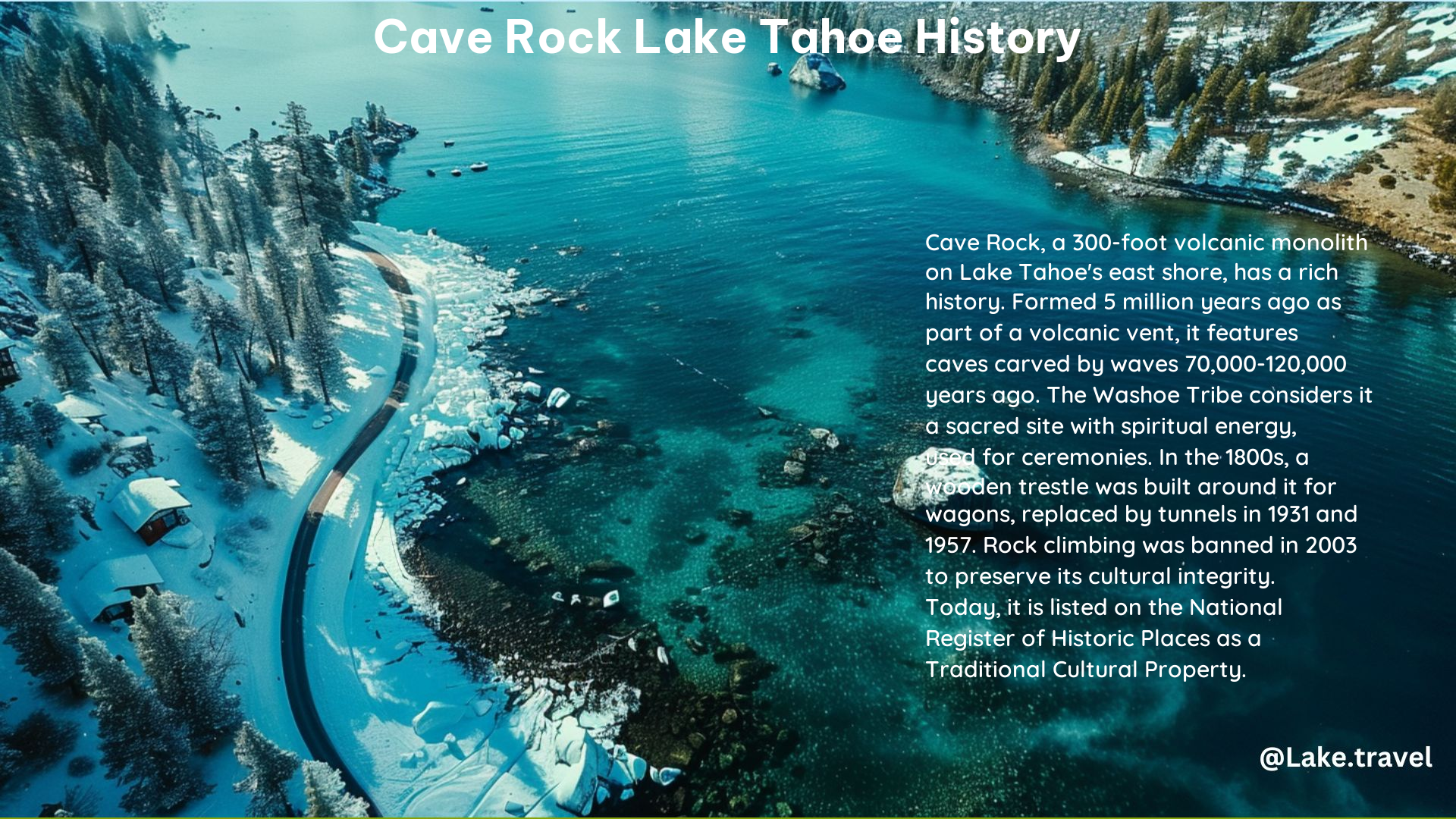Cave Rock, a majestic volcanic formation on the eastern shore of Lake Tahoe, Nevada, holds a rich and captivating history that spans thousands of years. As a sacred site for the Washoe tribe and a landmark for early settlers and explorers, Cave Rock has played a significant role in the cultural and natural heritage of the region.
Geological Formation of Cave Rock
Cave Rock’s origins can be traced back over 3 million years to the Pliocene era, when layers of volcanic ash and lava solidified to create this unique geological feature. Over time, the softer ash layers were eroded by wind and water, carving out the caves and crevices that give Cave Rock its distinctive appearance.
Cultural and Spiritual Significance for the Washoe Tribe

For the Washoe people, Cave Rock holds immense cultural and spiritual significance. They believe it is the dwelling place of the spirit of Lake Tahoe, known as deaw or Tahoe, and consider it a gateway to the underworld and a guardian of the lake. The Washoe perform traditional ceremonies and offerings at the site, believing it has healing powers and can restore balance to the natural world.
The Washoe’s Fight to Protect Cave Rock
The Washoe tribe has long fought to protect the sanctity of Cave Rock. Their efforts led to the creation of Cave Rock State Park in 1973, ensuring the preservation of this sacred site for generations to come.
Historical Use and Significance
Early Use by the Washoe People
The Washoe people have used Cave Rock for spiritual and cultural purposes for thousands of years, long before the arrival of European settlers and explorers.
Landmark for Settlers and Explorers
In the 1800s, Cave Rock became a well-known landmark for settlers and explorers, marking the entrance to the eastern shore of Lake Tahoe. It was a significant feature along various travel routes, including the old Washoe tribes trail, Johnson’s Cut-Off Road, the Lake Tahoe Wagon Road, and U.S. Highway 50.
Increased Tourism and Transportation History
The construction of the Lincoln Highway (now U.S. Route 50) in the 1930s brought more visitors to Cave Rock, making it a popular tourist attraction. Over the years, the site has been an important part of the region’s transportation history, with various routes and infrastructure built around and through the rock formation.
Conservation Efforts
Prohibition of Climbing
In 2003, the U.S. Forest Service prohibited rock climbing at Cave Rock to protect its spiritual integrity and cultural significance for the Washoe tribe.
National Register of Historic Places
In 2017, Cave Rock was listed as a Traditional Cultural Property on the National Register of Historic Places, further recognizing its historical and cultural importance.
Conclusion
Cave Rock’s captivating history is a testament to the enduring significance of this sacred site for the Washoe people and the local community. Its geological formation, cultural and spiritual importance, and role in the region’s history make it a truly unique and remarkable landmark within the stunning landscape of Lake Tahoe.
References:
1. https://www.boat-tahoe.com/best-of-tahoe/the-history-and-significance-of-cave-rock-in-lake-tahoe/
2. https://sierranevadageotourism.org/entries/cave-rock/44075513-fee3-4532-9ca6-715a1ae400d2
3. https://visitlaketahoe.com/blog/cave-rock-a-place-in-time/
4. https://parks.nv.gov/learn/park-histories/cave-rock-history
5. https://www.tahoedailytribune.com/news/a-rocky-history/
